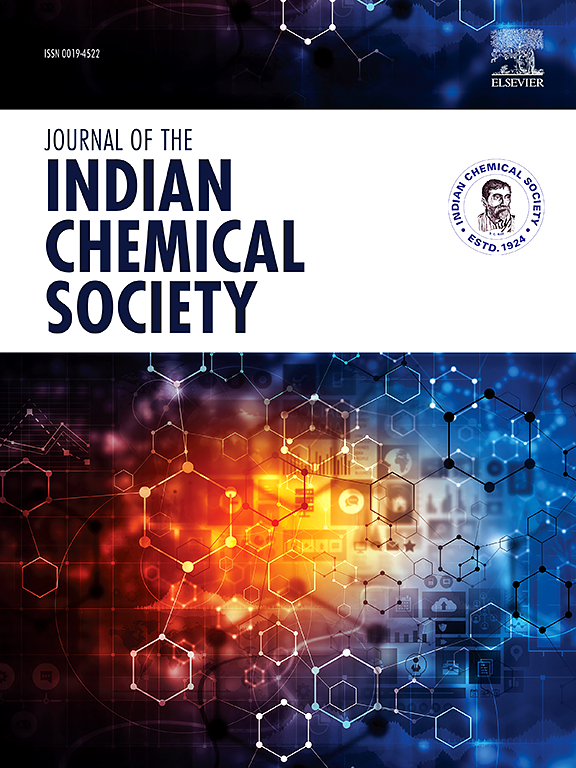Temperature effects on Cu2+ removal from synthetic wastewater using alumina-rich refining slag: Performance and mechanism
IF 3.2
4区 化学
Q2 CHEMISTRY, MULTIDISCIPLINARY
引用次数: 0
Abstract
In this study, the influence of temperature on Cu2+ removal efficiency by alumina(Al)-rich refining slag (RS) from synthetic wastewater prepared using CuSO4 was investigated and the removal mechanisms at different temperatures were elucidated. Batch experiments conducted at 20–80 °C revealed that elevated temperatures significantly enhanced Cu2+ removal efficiency, with optimal dosage requirements decreasing dramatically from 13-19 g/L at 20 °C to 0.2–0.4 g/L at 80 °C for achieving >99 % removal efficiency within 15 min. The enhanced performance was attributed to the accelerated hydration of Ca12Al14O33 in RS. This process increased the solution alkalinity and promoted the formation of CuCaAl-layered double hydroxide (LDH) through co-precipitation with Ca2+ and Al(OH)4- ions, wherein SO42−/CO32− anions were intercalated. At 20 °C, CuCaAl-LDH was less likely to be generated and Cu(OH)2 precipitation was a primary Cu2+ removal route. Concurrently, hydrolysis of CaS in RS released S2− ions, enabling temperature-independent CuS precipitation across all tested temperatures. These findings highlighted Al-rich RS as a low-cost precipitant for efficient Cu2+ sequestration, with optimal performance achieved at 60–80 °C. Moreover, the in-situ formed LDH phases, acting as an excellent adsorbent, rendered the Cu2+-treated RS a potential multifunctional material for wastewater remediation.

温度对富铝精炼渣去除合成废水中Cu2+的影响:性能与机理
研究了温度对含CuSO4合成废水中富氧化铝精炼渣(RS)去除Cu2+效率的影响,并对不同温度下的去除机理进行了探讨。在20 ~ 80℃条件下进行的批量实验表明,温度升高可显著提高Cu2+的去除率;最佳投加量从20°C时的13-19 g/L急剧下降到80°C时的0.2-0.4 g/L,在15 min内达到99%的脱除效果。脱除效果的增强是由于在RS中加速了Ca12Al14O33的水化作用,这一过程通过与Ca2+和Al(OH)4-离子共沉淀,提高了溶液的碱度,促进了cu -层状双氢氧化物(LDH)的形成,其中SO42−/CO32−阴离子被嵌入。在20°C时,CuCaAl-LDH的生成较少,Cu(OH)2沉淀是主要的Cu2+去除途径。同时,RS中CaS的水解释放出S2−离子,从而在所有测试温度下实现与温度无关的cu沉淀。这些发现突出表明富al RS是一种低成本的沉淀剂,可以有效地固存Cu2+,在60-80°C时达到最佳性能。此外,原位形成的LDH相作为一种优良的吸附剂,使Cu2+处理后的RS成为一种潜在的多功能废水修复材料。
本文章由计算机程序翻译,如有差异,请以英文原文为准。
求助全文
约1分钟内获得全文
求助全文
来源期刊
CiteScore
3.50
自引率
7.70%
发文量
492
审稿时长
3-8 weeks
期刊介绍:
The Journal of the Indian Chemical Society publishes original, fundamental, theorical, experimental research work of highest quality in all areas of chemistry, biochemistry, medicinal chemistry, electrochemistry, agrochemistry, chemical engineering and technology, food chemistry, environmental chemistry, etc.

 求助内容:
求助内容: 应助结果提醒方式:
应助结果提醒方式:


